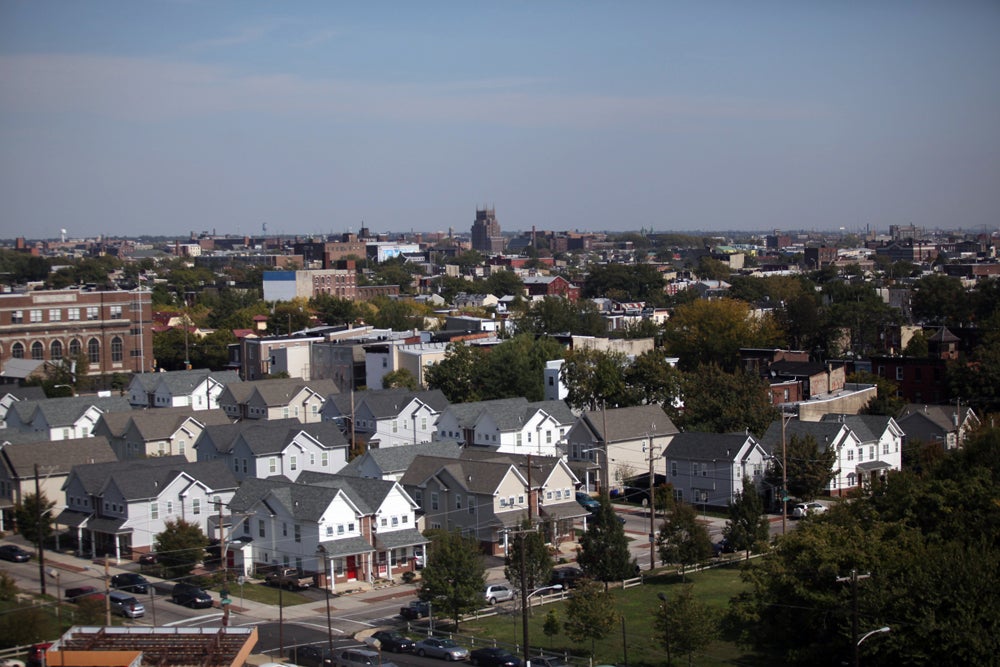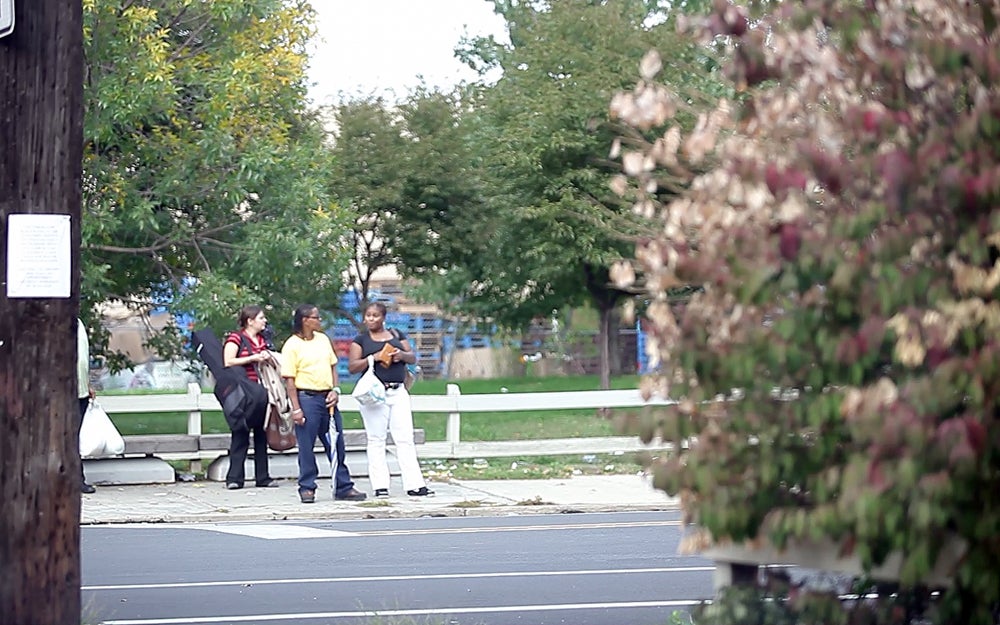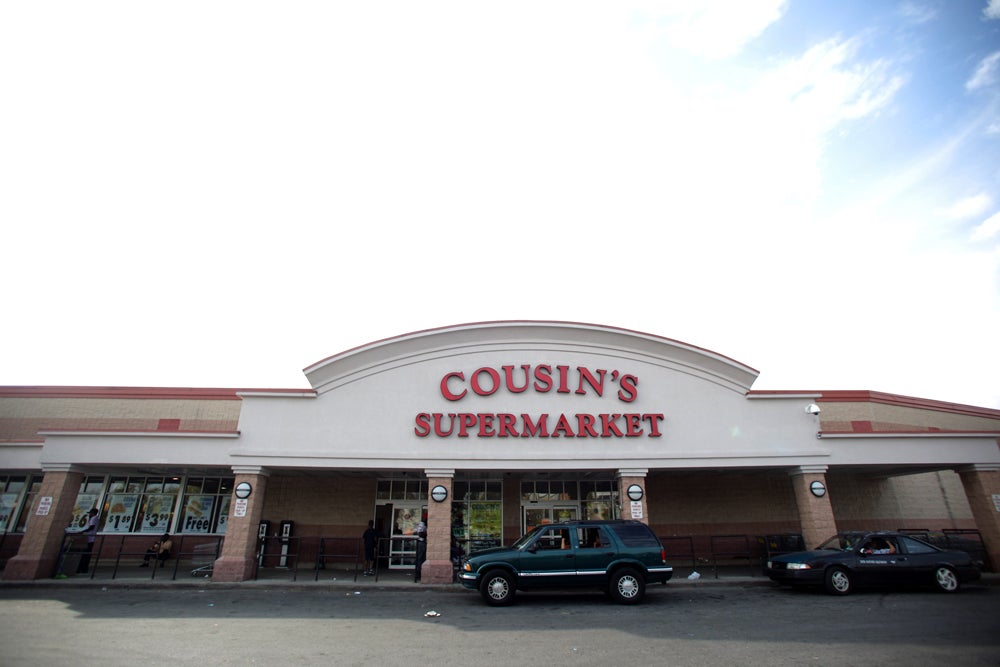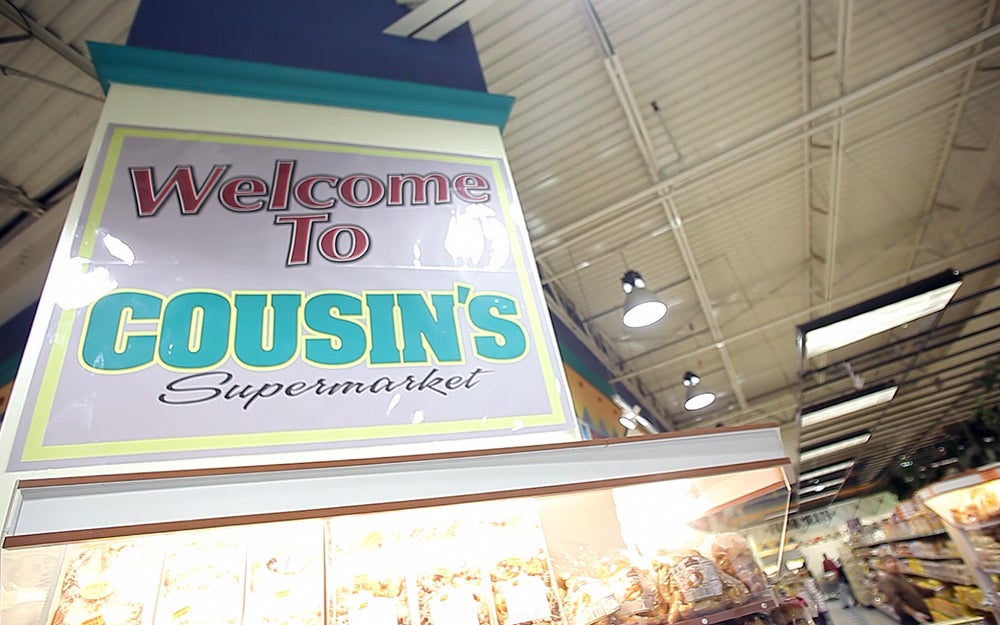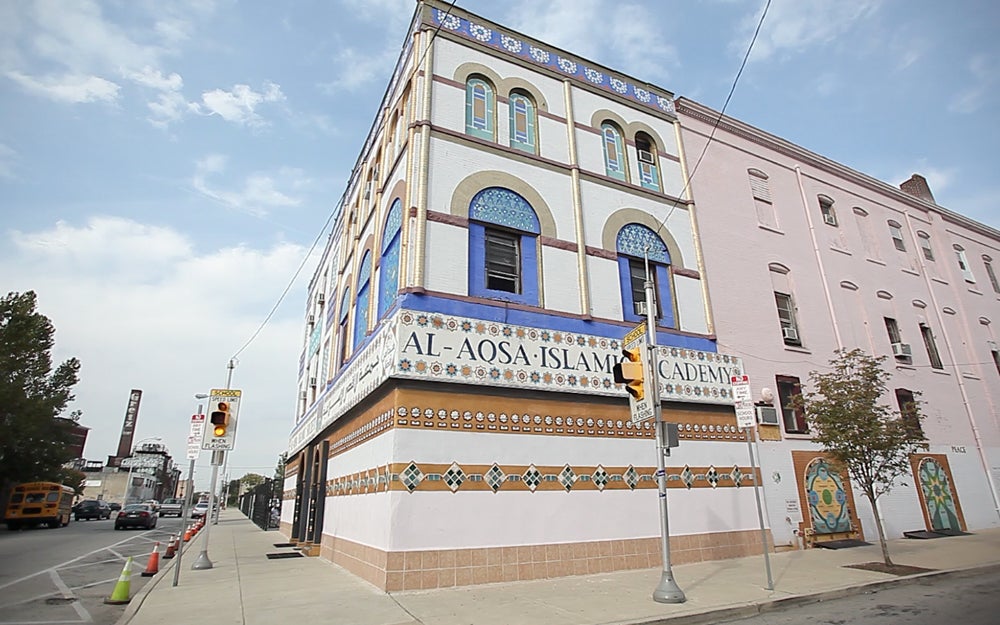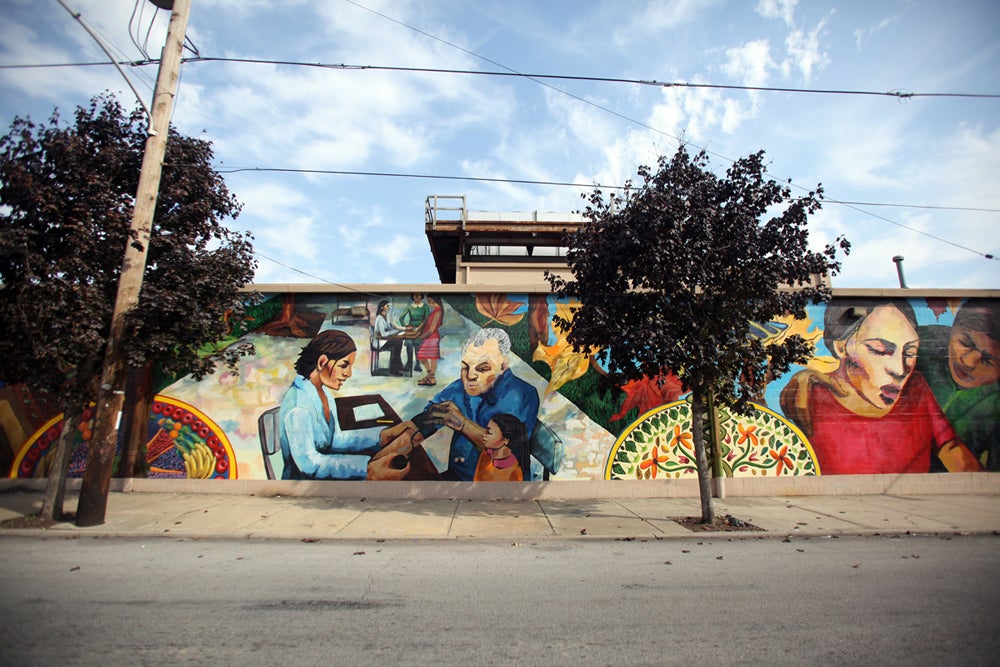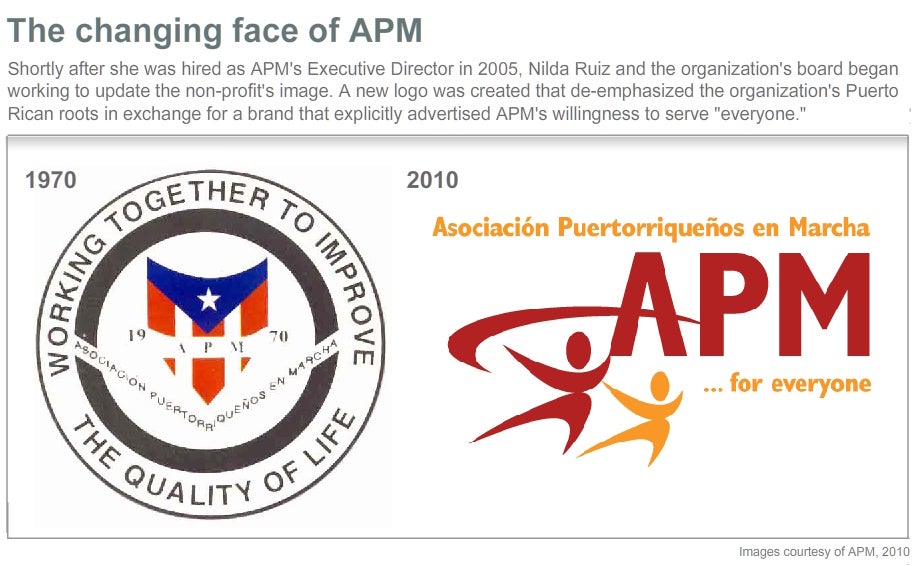Special Report: A new face on race relations
In the 1970s the city of Philadelphia was less a melting pot than a cauldron: a combustible mix of ethnic and racial tension, economic collapse and an aggressive police force that was openly hostile to minorities.
For the city’s small Puerto Rican community, it was a dreadful decade.
Gentrification and outright intimidation, in the form of beatings, street fights and arson, led many Puerto Rican residents to abandon Spring Garden – the city’s oldest Latino enclave – for cheaper and less desirable neighborhoods to the north. In 1975, a racially motivated firebombing killed five Philadelphians of Puerto Rican ancestry, including four children. A year later, a city police officer shot and killed Jose Reyes, a former mental patient, on the doorstep of his home.
It was in that charged climate that a city worker named Jesus Sierra and a handful of supporters created Asociación Puertorriqueños en Marcha, or the Association of Puerto Ricans on the March.
In the coming months, PlanPhilly will publish a series of reports on the Asociación Puertorriqueños en Marcha and its role in Eastern North Philadelphia’s revival.
Among other topics, the stories will cover the experiences of the area’s residents, the politics and racial dynamics of urban recovery, the design and architecture of low-income developments, and the massive investment of taxpayer funds that enabled the neighborhood’s transformation.
The writing, video and photography that comprise this series is made possible by a grant from the William Penn Foundation.
“We were tired of being pushed around. We wanted to be counted. The only way you can be counted is by getting together. We called it Puerto Ricans on the March because that’s what we wanted to do,” said Oscar Rosario, 70, who helped found the group with Sierra, who died in 2006.
Those were the days of the Young Lords and the Brown Berets, nationalist Latino groups modeled in part on the Black Panthers. Asociación Puertorriqueños en Marcha was far more mainstream, but it was no less committed to improving the plight of Puerto Ricans living in Philadelphia.
“We were not radical per se. But we were going to fight to be counted,” Rosario said.
In those early years, and for decades after, the group’s identity was clear: it was an organization created to serve low-income Philadelphians of Puerto Rican descent.
“Puerto Ricans have been like the ham in the middle of the sandwich. The Anglo folks have the economic power, and the African Americans have the political power, and we’re there in the middle,” said Nilda Ruiz, the organization’s executive director. “So the idea was to get up and do for ourselves.”
It is not unusual for social service organizations and community development corporations like APM to focus their work on a single ethnic group. Kenneth Gamble’s Universal Companies, for instance, are explicitly dedicated to improving the standard of living for South Philadelphia’s African American community. And there are Philadelphia CDC’s that focus on Asian and Arab economic development as well.
But in the case of Asociación Puertorriqueños en Marcha, that ethnic focus – which was so central to the organization’s identity at its founding – has faded dramatically over time.
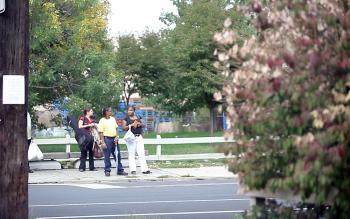
Awaiting passengers at the corner of 6th and Berks for the 3 SEPTA Bus. | Photo: Neal Santos
Today, the organization is better known by its acronym, APM, than as Asociación Puertorriqueños en Marcha. The Puerto Rican flag that graced APM’s logo since the 1970s is gone, replaced with an ethnically neutral emblem and the phrase “APM … for everyone.” APM’s annual reports and promotional materials now prominently feature African Americans and other non-Latinos who have benefited from APM-built housing and services.
“Eastern North Philadelphia is a different community then it was when APM first started, and APM is a different organization. We are not just here to serve Puerto Ricans, and we are being very purposeful in telling people that,” said Pelayo Coll, chairman of the APM board.
The community in question sits just east of Temple University, stretching from York Street to Jefferson Street. While APM offers social programs well beyond those boundaries, its redevelopment work has so far been limited to that area.
There, APM’s impact has been nothing less than extraordinary. The area, which is jammed between Fairhill to the north and Ludlow to the south, has been the site of perhaps the most impressive – and unlikely – neighborhood transformation in Philadelphia’s recent history.
In 1998, two-thirds of all properties in the area – 2,173 parcels – were abandoned buildings or vacant, trash-strewn lots. Today, due principally to APM’s work and a huge infusion of taxpayer funds, only 687 abandoned properties remain. The rest have been redeveloped, turned into well-maintained grassy lots or purchased for use as parking lots and side yards.
But the physical transformation has not been the only change. The neighborhood is also fast becoming one of North Philadelphia’s most culturally diverse areas, home not just to Puerto Ricans and African Americans, but growing Asian and Arab communities as well as Mexicans, Dominicans and other non-Puerto Rican Latinos.
Such transitions are not always easy on neighborhoods, as Philadelphia’s experience in the 1970s demonstrates. And for organizations like APM – which were created for the express purpose of serving a specific ethnic group – it can be particularly difficult to adapt.
And yet, by most accounts, APM has managed the transition well, though not without some internal wrangling.
“It was something we debated and discussed,” Coll said. “We did not want to lose the original vision of the founders, but we realized we needed to keep up with the times and keep up with the population.”
A video showing the ethnic diversity of Cousin’s Supermarket’s customers and its food selection. Story continues below…
Bridging the Gap
For APM, geography may well have been destiny.
When the organization branched beyond social services to development projects in the 1990s, it settled on a relatively small patch of land in Eastern North Philadelphia that surrounded its Germantown Avenue headquarters.
Notably, the development zone stretched from 4th Street to 9th Street, which meant that it straddled 6th Street, the avenue that has long served as an informal boundary between the African American and Latino sections of North Philadelphia.
Forced out of Spring Garden in the 1960s and 1970s, Puerto Ricans followed what Temple University professor David Bartelt called “the line of least resistance” between white neighborhoods like Kensington and Fishtown and African American neighborhoods to the west.
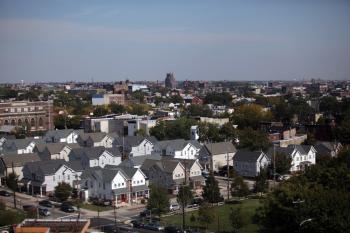
An overview shot of the APM neighborhood, as seen from 9th and Montgomery. | Photo: Neal Santos
“This was an area with available housing, where it looked like there would be less conflict, it was the easiest place for the Puerto Rican community to locate,” said Bartelt, an expert in urban housing policy and redevelopment.
It was an opening created by widespread abandonment of the neighborhood in earlier years, as jobless residents moved out after big factories – like the Stetson Hat manufactory – shut down.
“It was to their advantage that the neighborhood wasn’t viewed as anybody’s top priority in terms of protecting turf. This wasn’t like South Boston or Fishtown during the 1980s, where there were incidents anytime Section 8 housing moved in,” said John Kromer, a former director of the city’s office of Housing and Community Development who recently completed an extensive study of the APM neighborhood.
Over time, Philadelphia’s Puerto Rican population expanded further north as far as the lower Northeast, growing along a narrow peninsula between African American neighborhoods to the west and white river wards to the east, Bartelt said.
As the city’s Puerto Rican population grew, tensions between Latino Philadelphia and African American Philadelphia increased as well, a dynamic that has played out in cities across the nation.
“It is a very complex relationship. Neighbor to neighbor is usually OK, but institutionally you have seen a lot of political and economic competition. And in an era where manufacturing jobs were declining significantly, Eastern North Philadelphia was not the friendliest of places,” Bartelt said.
Broadening its base
The district APM claimed as its own bridged the African American and Latino worlds.
Early on, the organization realized it would have to work cooperatively with North Philadelphia’s African American political leaders, if for no other reason than there were few Latinos in public office and none who specifically represented APM’s neighborhood.

A customer pulls a plastic bag from the aisle in front of traditional ethnic produce such as plantains, chayote, and yucca (or cassava). | Photo: Neal Santos
“I think that influenced APM, and encouraged them to think pragmatically about dealing with the challenge of diversity,” said Kromer, who is also the author of Fixing Broken Cities, a study of urban redevelopment strategies. “Apart from any kind of altruistic goals APM might have had, they recognized at an early stage that they needed to demonstrate to elected officials that diversity was important to them if they hoped to win political support.”
Though he did not lack for idealism, Jesus Sierra, APM’s founder, was indeed a pragmatic man.
In the organization’s earliest years – when it was focused purely on social services, such as assistance to the mentally disabled – Sierra found an unlikely ally in Mayor Frank Rizzo, who channeled city funds to APM.
“Rizzo, as everybody knows, had problems with the African American community. He had more of an affinity with Puerto Ricans, even though there were still challenges,” said former City Solicitor Nelson Diaz, who has long advised and advocated for APM.
Later, though, when Rizzo had left office and APM began branching into development, Sierra worked to solidify his relationship with African American elected officials.
Perhaps his most important alliance was with State Sen. Shirley Kitchen, who has represented North Philadelphia in Harrisburg since 1996.
As Kitchen recalls it, she and Sierra both saw the makings for a deal. As the leading Latino organization in the neighborhood, APM had access to public housing funds. But APM lacked political clout in Harrisburg and City Hall, which Kitchen had.
“So we sat down. We actually did a handshake, and agreed that we would work together and would split everything 50-50, that we would serve Latinos and blacks equally,” Kitchen said.
That handshake was cemented by the simple demographics of APM’s neighborhood, where roughly half the population is Latino, and half is African American.
“The west was predominantly African American, the east was predominantly Latino, and what we did was to build right down that line, on 6th Street and Germantown Avenue,” said Rose Gray, who heads up APM’s development arm. “There was one thing those cultures had in common, and that was a need for housing and a need for services, and we have tried to meet that need for anyone who asked.”
An interactive graphic depicting the racial split between Hispanics and African Americans at 6th Street. Story continues below…
The result, Gray said, has been a nearly 50-50 Latino, African American mix in the ethnicity of those who rent APM’s apartments or buy its homes.
“When you start with a diverse neighborhood, and you have an open process and nobody is excluded, you automatically get a mixed group of residents, and that’s with no goals, no quotas, just the natural mix of the neighborhood,” Gray said.
Federal housing laws prohibit any developer – non-profit or for-profit – from discriminating on the basis of race or ethnicity. And there are additional regulations for developers like APM that receive federal housing funds, which require builders to broadly advertise low-income housing opportunities.
But APM appears to have gone beyond those basic requirements, adopting a robust outreach program not just in the African American community, but in Philadelphia’s Asian community as well, which is coping with a housing shortage and high rents in Chinatown.
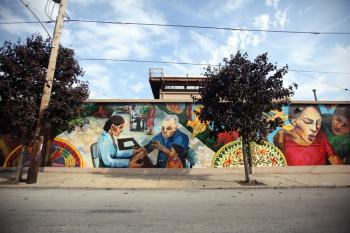
A temporarily untitled mural painted on 1931 N. 6th Street by artist Betsy Casanas. | Photo: Neal Santos
“The families we work with want to remain in Philadelphia and live in a place that’s accessible to public transportation, and APM has helped us find low-income housing for a number of families,” said John Chin, executive director of the Philadelphia Chinatown Development Corporation.
Interviews with several active African American residents in Eastern North Philadelphia suggest that APM is slowly winning the trust of the black community as well.
“They are broad based, they invite everybody in when there are community discussions, their housing developments are multi-cultural. They are not just about Puerto Ricans,” said Dana Clark, an African American who was born and raised in Eastern North Philadelphia.
Clark’s mother lives in an APM development, and Clark said he had his home’s electrical system repaired at a fraction of its real cost thanks to an APM program.
“I’m proof, my mom is proof, they help out black people, they watch out for us, too,” Clark said.
Block captain Andre Mears is another African American who has benefited from APM’s work.
“Maybe the founder was Puerto Rican, but APM really will help anybody,” said Mears, who grew up in the neighborhood and eventually returned to it when he had the chance to buy an APM developed townhome.
To be sure, racial divides remain, and not all residents are convinced that APM truly is an equal opportunity service organization and developer.
“I don’t know that tensions have eased. I still see divisions. I think there still is a need to get brown and black folks sitting at the same table and talking to each other,” said Bishop Dwayne D. Royster, the pastor of Living Water United Church of Christ, on the 2000 block of Germantown Avenue.
“The language divide can be challenging. The cultural divide can be challenging. There is a lot of work still to be done,” Royster said.
His congregation reflects the neighborhood it serves: about half Latino, half African American, with a smattering of white parishioners.
But even in his church, Royster said, racial tensions are evident.
“We have to be very sensitive, and we have to work on those issues very diligently,” he said.
In Royster’s view, APM has done an admirable job creating mixed-race communities in its housing developments. But to his observation, the organization’s social service operation – which includes everything from daycare, to medical services, to addiction counseling – is still predominantly focused on Latinos.
Ruiz concurs, though she said that the organization’s social service operation serves a larger percentage of non-Puerto Ricans every year. APM did not supply a racial breakdown of its clients for this report, saying there were no reliable records readily available.
Perhaps because of that, Senator Kitchen will occasionally hear from residents who feel that APM does not do enough to help African Americans in the area.
“It can be tough. There are people who don’t want APM doing the development because they think it’s taking from them. It’s not, but some people will still think that,” said Kitchen, when asked if any African American residents criticize her for supporting APM.
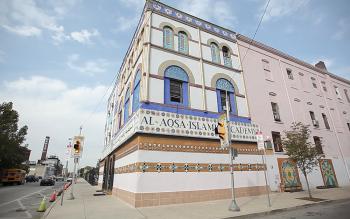
Al-Aqsa Islamic Academy, located on 1501 Germantown Ave. is a private school in Philadelphia, Pennsylvania. The facade is a painted mural called Doorways to Peace by Cathleen Hughes and Joe Brenman. | Photo: Neal Santos
This year, APM – with the support and funding of the Local Initiatives Support Corporation – is working on a comprehensive quality of life plan for the neighborhood, a long process that includes extensive interviews with community residents.
The views of some respondents underscore Kitchen’s point: not everybody is convinced APM is out to serve all low income residents, regardless of race.
“APM’s relationship could use improvement with the broader community,” one respondent said.
Another observed that “we don’t see African Americans and Latinos working together.”
Yet, for the most part, the respondents in this non-scientific survey of community leaders and stakeholders felt that diversity was one of the neighborhoods greatest strengths.
And in Kitchen’s view, the stubborn perception that APM is an organization by and for Latinos alone will eventually fade away.
“Someone will come in, and they’ll whine and tell me APM won’t help them because they’re not Puerto Rican. But then I tell them to go ask for help anyway, and they come back a week later telling me APM is the greatest thing in the world,” Kitchen said.
Updating their image
APM’s leaders well know that some residents still consider the organization to be the Puerto Rican CDC.
That is an identity, though, that the organization has worked hard to shed.
Shortly after she was named APM’s executive director in 2005, Ruiz and the organization’s board went through what she called a “thorough self-examination.”
“The question was: do we continue as a Puerto Rican agency, or do we serve the low income and disenfranchised residents of our neighborhood, whatever their ethnicity?” Ruiz said.
Given APM’s history, the decision was not easy, and it came at a sensitive time in the organization’s evolution. Jesus Sierra, APM’s founder, had recently been forced out by the board. Diluting APM’s Puerto Rican identity, some argued, would be a further repudiation of the organization’s roots.
Ultimately, though, the dynamics of APM’s changing neighborhood won out over tradition, and the board got behind the mission of serving all low-income residents, regardless of race, Ruiz said.
“And then the question was posed, what do we do with this Puerto Rican flag on our logo?” Ruiz said. “It’s a source of pride for us, but is it welcoming to other people?”
Reluctantly, the board agreed to lose the flag logo. Then came another proposal: why not put the tagline “para todos,” on APM’s new logo, a gesture to non-Puerto Rican Latinos in Philadelphia who needed the organization’s assistance.
That too, though, was deemed not welcoming enough. After all, the board decided, “para todos” – Spanish for “for all” – meant nothing to non-Spanish speakers.
Ultimately, APM settled on its new brand: “APM … for everyone,” accompanied by a bland but decidedly non-ethnically identifiable rendering of two figures with outstretched arms.
“We chose to embrace the changes in our neighborhood. That’s what it was about,” Ruiz said.
An illustration depicting the change APM has made in its branding through the years. Story continues below…
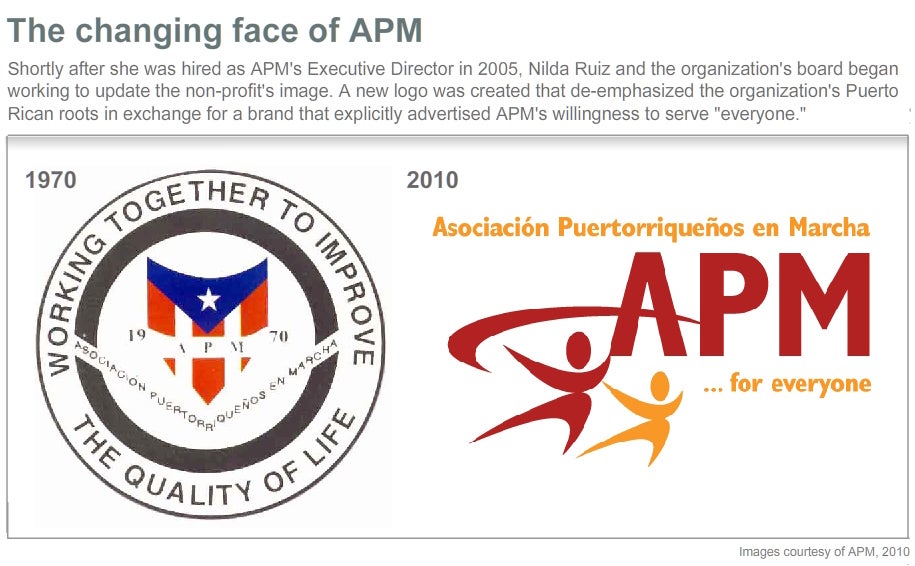
Increasingly, those changes are reflected on APM’s staff and board as well, with non-Puerto Ricans holding key positions in the organization.
For instance, Gray, who is an APM vice president and the driving force behind the organization’s redevelopment work, is white. APM’s vice president for administration and finance, Rasak Azeez, is African American. And the board now includes Mexican Americans and Columbian Americans in addition to Puerto Ricans, Coll said.
In the years ahead, APM hopes the neighborhood’s diversity will fuel its redevelopment, particularly the dilapidated Germantown Avenue commercial corridor. Gray and Ruiz imagine an eclectic mix of ethnically oriented restaurants and shops lining the street. Already, the neighborhood is home to Cousin’s, a grocery store featuring hard-to-find foods from a wide array of cultures.
“We think the area has all the making of a neighborhood with a real international flavor, we think it can be a hub for a lot of different groups,” Ruiz said.
She’s not done working on that logo either. The name behind the acronym Asociación Puertorriqueños en Marcha – might need to go too, if APM continues to grow, Ruiz said.
“How about the Association of Philadelphians on the March?” she said.
Contact the reporter at pkerkstra@planphilly.com
WHYY is your source for fact-based, in-depth journalism and information. As a nonprofit organization, we rely on financial support from readers like you. Please give today.




